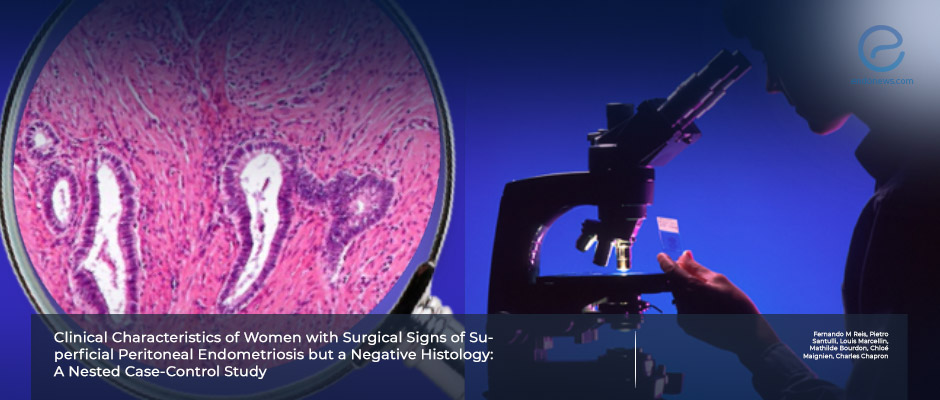Clinical Endometriosis Despite Negative Histology: A Diagnostic Dilemma
May 2, 2025
Histology-negative patients present with clinical features indistinguishable from confirmed endometriosis.
Key Points
Highlights:
- Women with laparoscopically suspected peritoneal endometriosis may lack histological confirmation but experience symptoms as severe as those with histologically proven disease.
- Histology-negative status may not exclude clinically significant endometriosis may delay management.
- The findings highlight the need for better visualization tools and criteria for clinical decision-making.
Importance:
- Endometriosis-related pain may persist despite negative histology.
- Fibrosis and inflammation without glands can still cause symptoms.
- Clearer criteria are needed to guide management and prevent under-treatment.
What's done here:
- This is a single-center, retrospective nested case-control study conducted at the University of Paris, France.
- Study aimed to compare clinical characteristics of histology-positive vs. histology-negative superficial endometriosis.
- Researchers included a control group of women undergoing surgery for other benign gynecological conditions without endometriosis.
Key Results:
- Prevalence and severity of endometriosis symptoms (dysmenorrhea, deep dyspareunia, and non-cyclic chronic pelvic pain) were equivalent in both histology-positive and histology-negative groups.
- Compared to the control group, women in the histology-negative group were:
- 14× more likely to have a family history of endometriosis (14% vs. 1%)
- More likely to report primary infertility (29% vs. 19%)
- More likely to report primary dysmenorrhea (50% vs. 33%)
Lay Summary
To diagnose endometriosis, clinicians typically rely on a combination of symptoms, noninvasive imaging, and histopathological examination of lesions seen during surgery. However, in some cases, even when visible lesions suggest endometriosis, histological confirmation is not obtained—leaving the diagnosis uncertain.
This study aimed to investigate the clinical characteristics of women with laparoscopically diagnosed superficial peritoneal endometriosis who lacked histologic confirmation, compared to those with histologically proven ones.
Reis et al., from the Centre Medical Faculty at the University of Paris, conducted a retrospective, nested case-control study involving women who underwent laparoscopic surgery for pelvic pain, infertility, abnormal bleeding, or pelvic masses. Patients were grouped based on surgical reports indicating either endometriosis or other benign gynecological conditions (e.g., fibroids, adnexal cysts). Among those diagnosed with endometriosis, a subgroup of women with superficial peritoneal lesions was identified. In total, 390 women with suspected superficial endometriosis were compared with 390 controls randomly selected from the non-endometriosis condition group.
Each participant completed a structured, face-to-face questionnaire assessing clinical symptoms, menstrual and reproductive history, and use of hormonal contraception. All patients had histologic evaluation performed by a pathologist. Of the 390 women with laparoscopically diagnosed peritoneal endometriosis, only 245 had histological confirmation.
While demographic characteristics were similar across groups, clinical symptoms differed significantly. Women in the histology-negative endometriosis symptomatology carrier group reported greater severity of dysmenorrhea, more frequent school absenteeism during menstruation, and a higher rate of fainting episodes compared to controls. When compared to histologically endometriosis proven patients, pain intensity and types of pain (e.g., chronic pelvic pain, deep dyspareunia) were similar, though gastrointestinal symptoms differed between the groups.
The authors highlight the need for molecular diagnostics and biomarker research to better understand and validate the symptoms in women with histology-negative but clinically suspected endometriosis.
This study was recently published in Gynecologic and Obstetric Investigation.
Research Source: https://pubmed.ncbi.nlm.nih.gov/39978328/
histopathology negative histology superficial peritoneal endometriosis pelvic pain infertiility laparoscopic surgery family history

